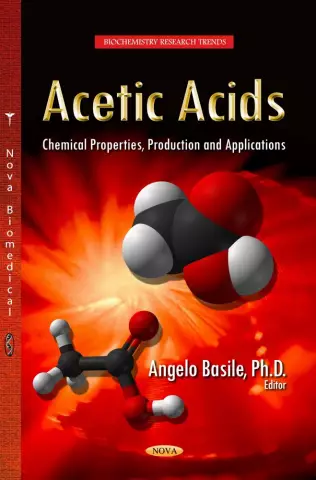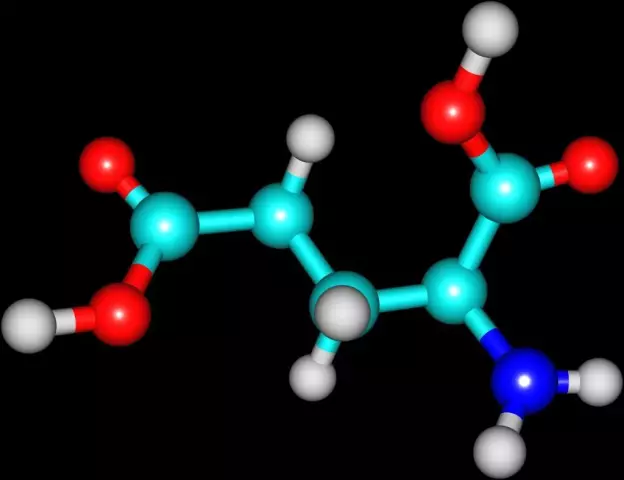- Author Rachel Wainwright [email protected].
- Public 2023-12-15 07:39.
- Last modified 2025-11-02 20:14.
Gluconic acid

Gluconic acid is a natural substance. The remainder of this acid in phosphorylated form is one of the intermediate products of carbohydrate metabolism in living organisms.
The natural way of gluconic acid formation during glucose oxidation is present in a wide variety of products - beer, honey, etc. Artificial methods for producing gluconic acid have also been developed. For this, glucose is oxidized using the enzyme glucose oxidase. Glucose oxidase itself as an industrial product is obtained from cultures of microscopic fungi. Some microorganisms are used directly in the production of gluconic acid.
The use of gluconic acid
As a result of artificial production of gluconic acid, white or colorless crystals are obtained, odorless and tasteless. They dissolve well in water, forming a light yellow viscous solution.
Gluconic acid is used as a dietary supplement. It is also designated E574, the additive is approved for use in Russia and the EU countries. The main purpose of gluconic acid is to regulate acidity and loosening. In addition, it is an acidifier, a complexing agent, and enhances the effect of antioxidants.
As an acidifier, the use of this substance is irrational. The fact is that in terms of taste, gluconic acid is 5 times weaker than citric acid, and it is used in exceptional cases to give products a sour taste.

With heavy metals, as well as with calcium, iron, gluconic acid forms highly soluble compounds, thus exhibiting synergistic properties with antioxidants.
Food supplement E574 is easily absorbed from the digestive tract and is well tolerated by the body. It is able to activate metabolism and increase the efficiency of the body. Very rarely, gluconic acid is capable of irritating or laxative to the intestines.
The amount of gluconic acid, the maximum possible for its safe use, has not been precisely established. A number of researchers report that you should not consume more than 50 mg / kg of this substance per day.
In addition to the food industry, gluconic acid is used in several other industries. With its help, detergents are synthesized, and in the pharmaceutical industry, it serves as a filler for tablets.
Found a mistake in the text? Select it and press Ctrl + Enter.






